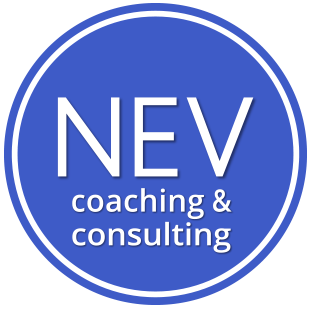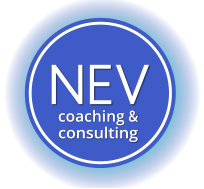 Elegant Assertiveness is a fundamental quality and skill for all of us that has enormous impact on almost every area of our lives.
Elegant Assertiveness is a fundamental quality and skill for all of us that has enormous impact on almost every area of our lives.
But there is so little literature, not to mention training, in this area. Especially as we get older. When respecting our rights, limits and needs becomes so critical to our overall happiness and success.
In this post, we will share some quality strategies for how to empower and strengthen your own assertive nature. Doing so, with ease, elegance and authenticity to ensure it doesn’t slip into aggression.
See our first post on the topic “How Assertiveness Can Transform Your Life” for more insight.
What is Elegant Assertiveness anyway?
We define assertiveness as “the mindset and skills that allow you to successfully stand up for your rights, needs, and desires while respecting those of others”.
Consider that the typical scale for most people is passivity on one end and aggression on the other.
-
Passivity
We define it as the “lack of recognition, decision-making and/or action in recognizing and manifesting what makes sense for you”.
These can be circumstances around your own needs and rights, or that of others that you choose to represent or fight for.
When we repeatedly ignore our needs, stay quiet, succumb, or give in, we are usually acting from a place of passivity.
I say “repeatedly” because not every battle is worth fighting or should be fought. But if you are so often sitting down, instead of standing up, for something that is truly important to you, it’s likely passivity is at play.
-
Aggression
On the other hand, we define this as “a mindset and actions that attempt to create change for what you want, but at the cost of disrespecting others or their situations”.
This may show itself in dominating, abusive, overly-emotional, defensive, or otherwise conflictive actions and ways of being. This is by no means to say that every emotional or firm reaction is aggressive.
Not at all. Sometimes, in fact, strong emotion and rigor is required to get the point across and get things done. But when it slips into actions that are directly offensive or domineering, that usually means that aggression is at play.
Most of us, from lack of knowledge and training, tend to slide along the passivity-aggression scale, causing a great deal of frustration and pain to ourselves and others.
We swallow back repeatedly what we feel needs to be said and done, and then when the frustration builds to a seemingly intolerable level, explode in moments of aggression.
But it doesn’t have to continue this way at all.
The key practices we will outline below will allow you to shift the way you think, feel and act, so that your needs are met sooner and more successfully, and explosive moments are entirely avoided.
You should know that at first, like any new learning, this can feel awkward, and you may even have some missteps in the adjustment process, which is completely normal. But staying the course WILL get you the results that you want, as we have learned from experience with so many cherished clients, collaborators and loved ones.
So how do you get started on your Elegant Assertiveness Skills?
1) Own your Assertiveness – Get better acquainted with yourself
You are the beginning of any assertive maneuver, and so the first factor of success is how well you regularly understand your own beliefs, thoughts, motives and emotions.
This is also the first core area of emotional intelligence.
Without this, it is impossible to truly understand what is driving you at any one moment, and therefore, how to strategize the rest of your decisions, actions, and communications, to ensure good results all around.
Get used to asking yourself “What am I thinking?” “What am I feeling?” “What am I believing/fearing/expecting with what’s going on?”.
The more detailed, honest reflection you can bring to this initial moment, the more information it will give you for how to proceed in the best way possible.
2) Elegant Assertiveness Skill – Take a moment to consider the other
In any potential assertiveness situation, there is always an “other”. Someone you have to deal with, in one way or another, to get your rights, needs, or desires met.
But the success of this depends on considering the other person’s position and situation. As difficult as it may be, this is key to ensuring that your decided response is truly effective. “What are their motives/expectations?” “And What do they WANT from you, really (sometimes it may not be what you think or fear)?” “Also, What is the best way to treat this person and situation to get what I want without stepping on them?”
Simply taking a few moments to really consider the other, even if you don’t really want to, can give you some insight as to the best way to move forward, while preserving mutual respect and understanding.
3) Elegant Assertiveness Goals – What do I gain/lose by standing up?
We are often so afraid of causing conflict and drama that it can FEEL easier to just stay passive. Say and do nothing.
But that’s also because we are often expecting the worst possible results, perhaps because we don’t know how to design a “WIN-WIN or middle-way solution”.
Other times, we’ve had difficult moments in the past with this person or institution, and that may be enough to keep us quiet and fester. But the sign of the truly wise and mature is looking in the grey area for ways to get at least some relief and solution.
In any potentially assertive situation, ask yourself honestly “What am I gaining by pulling back?” and also “What would/could I gain by standing up?” “What are the short and long term costs of either option?”
And think deeply and in detail, even if it’s just for 15 minutes. Don’t just shy away or launch in with guns blazing. A few moments to really think this through, on the impact of yourself and to the other, will go a long way.
4) The Key to Elegant Assertiveness – Communication is pretty much EVERYTHING
This is what we often say in our practice. “It’s rarely what you say, and most often HOW you say it that makes all the difference”. Yes, sometimes this is not the case but again, we are looking at the majority of situations.
And even in those, where the core message is very difficult, the WAY you go about delivering it is truly key to getting the best result. (Think of language, tone, nonverbals, situation, etc.).
See our Communication Blogs for deeper insight and download our fantastic free communication guide on our pop-up by subscribing to the NEVBlog on our home page: “The # 1 Tool to Succeed in all Types of Communication”.
5) Think long-term
Our evasion of difficult moments is often due to the fact that we just don’t want to face the issue. It could be for fear of conflict, reputation, emotional reactions, embarrassment and overall discomfort. And sometimes, it’s really NOT the moment.
But ask yourself honestly “If I stay passive and eventually get aggressive OR assert myself kindly and respectfully right now, how will this affect my future and my future relationship with this person?” (if there is one).
If you honestly realize that this will be a battle that will keep coming up, then sooner rather than later, it’s best to do something. Before it becomes too big and potentially unsolvable.
When it becomes the latter, relationships almost never survive. And that can be a much bigger cost. Try attempting to resolve things when everything is still less charged and complicated. It’s your call but try and resist the temptation to let it go indefinitely.
6) Explore the BEST WAY of asserting yourself
Some people will tell you that a direct conversation is always the best, but it’s simply not true. It depends on many factors including your relationship, the potential social implications, personality styles, etc.
Yes, a well-strategized conversation can be especially effective. But, if a situation is such that direct personal confrontation, however respectful, might cause too much anxiety, for you or them, then there’s a host of other options for you to better deliver your message.
However, keep in mind that you still need to design it just as carefully as any conversation. Perhaps it’s a letter/email, a video, a gesture, a presentation, etc. But again, follow our best practices in the Communications Canvas. It will help you figure this out as well.
You also need to consider this: when your method of delivery doesn’t allow for immediate dialogue, be extra careful in the way your language is phrased and delivered.
So these are some starting points, though there are many other things you can consider and play with. Never hesitate to come to us with your questions, comments and we will always be happy to answer.



Your mode of describing all in this article is in fact good, all can effortlessly understand it, Thanks a lot.
Check out my site; Check the platform
Thank you!